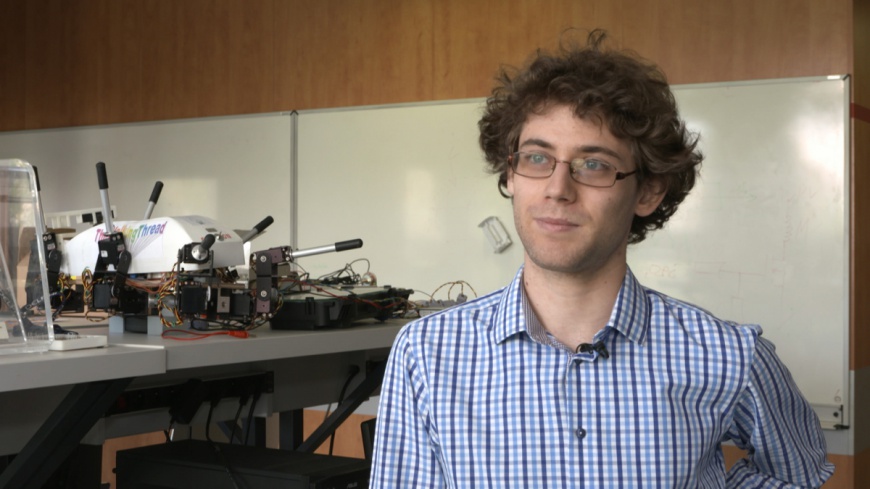| Says: | Jan Życzkowski, Kraksat project coordinator, the AGH University of Science and Technology in Kraków Rafał Janiczak, student of materials engineering, AGH University of Science and Technology in Kraków |
Polish scientists’ invention may revolutionise the control of near-Earth orbits. It will enable making precise satellite images
The ferrofluid flywheel will be used for controlling satellites. The invention by Polish scientists will facilitate research measurements on the near-Earth orbit. The scientists from the AGH are working on the design of a satellite orientation control system which will make it possible, for instance, to take more precise satellite images. The new system will be tested on the KRAKsat satellite, which will be launched into the near-Earth orbit in November 2018. The space industry is considered one of the most promising sectors in the world. In 30 years its private section will reach almost 3 trillion dollars.
The KRAKsat is a cubesat satellite, i.e. a cube with sides of 10 cm. Its main task is to test the proprietary concept of the scientists from AGH – the ferrofluid flywheel.
“There is often a need to control the orientation of satellites in the near-Earth orbit. This is because when the satellite is launched from the rocket, its rotary speed is very high and it needs to be slowed down. We need to control research instruments such as a video recorder or antenna,” said Jan Życzkowski from the AGH University of Science and Technology in Kraków, the KRAKsat project coordinator, in an interview with the Newseria Innowacje news agency.
The solution developed at AGH consists of building a flywheel from ferrofluid, i.e. magnetic fluid. This means that when a magnet is placed close to the fluid, it will pulled towards it. This property is to be used in a device equipped with electromagnets, operating on a similar basis as a stepping motor.
“Satellites present in the near-Earth orbit for longer periods of time need flywheels in order to change and stabilise their position. Currently all flywheels are mechanical, which means that they have moving parts and that may contribute to their failure rate. KRAKsat has no moving parts but a container with ferrofluid inside which is set in motion and all the other parts are immobile. Ferrofluid is a fluid with tiny iron particles which interact with magnetic fields. This is how the fluid is moved,” said Rafał Janiczak, member of the KRAKsat project.
The satellite will probably be launched into the near-Earth orbit from the International Space Station in the USA in November 2018. According to the project coordinator, the experiences of the scientists from Kraków should inspire other universities to work on solutions for the space industry because its commercialisation prospects are very promising.
“The space industry is very promising and it’s really important that it also develops dynamically in Poland. Polish universities and companies have reasons to be proud of, and their numerous instruments are used in various parts of the solar system. The space industry is moving towards outsourcing certain components. Many companies participate in assembling a whole satellite, but Poland should be able to send its own satellite to space,” Jan Życzkowski claimed.
According to the analysts from the Bank of America Merrill Lynch, the private space industry, whose value is estimated at around 350 bn dollars, in the next 30 years will grow to almost 3 trillion dollars.
Trade

Polish consumers are more satisfied than Americans, with the customer satisfaction level being close to 80 percent
For six years the customer satisfaction index in Poland has grown by over 17 percentage points to nearly 78 percent, and it currently exceeds the customer satisfaction levels recorded in the USA and the United Kingdom. Service quality and its growing significance among businesses have had a tremendous impact on customer satisfaction. For the eleventh time the Customer Service Quality Star titles have been awarded to entrepreneurs recording the best results in this field.

